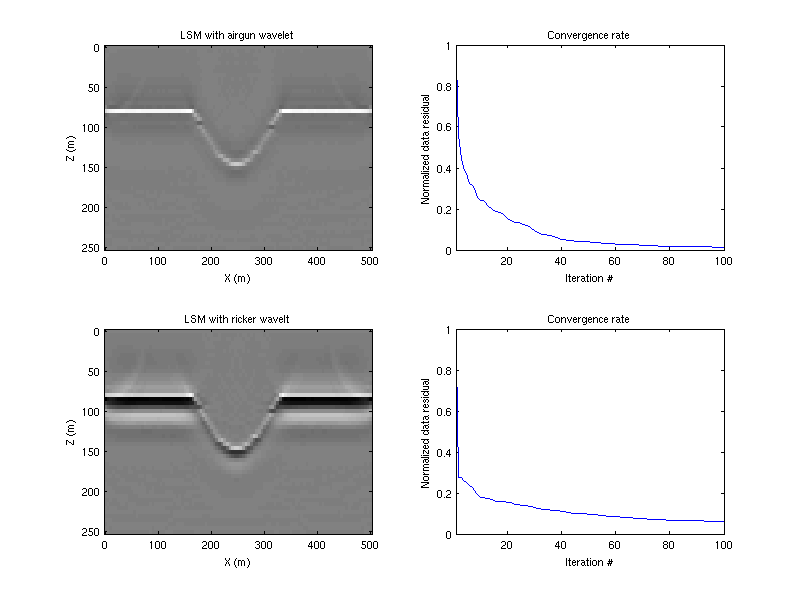|
Objective:
Learn how to get the source wavelet from field data.
Method:
The source wavelet is extracted from the raw data, with procedures (Figure 2):
1). Define a local window, M by N, (M is the time sample and N is the
number of traces), make sure the reflection event can be seen clearly
from this window;
2). Use cross-correlation to find the time shift, by which to flatten all the traces in the local window;
3). Stack all the traces in the window to enhance the signal to noise ratio.
4). Adjust the wavelet's length if needed.

Figure
2. Workflow of the method.
Procedure:
- Load wavelet_lab.tar.gz, from which extract all files to your working directory. (use "tar -xvf wavelet_lab.tar.gz" to extract file).
- Go to the extracted directory, and add the path by "addpath((genpath('./')))" .
- Run the main.m cell by cell.
Questions:
- In the COG data, find another working area, and show your picked wavelet result.
- Load the CSG data, get the wavelet, notice the difference.
If it is needed, write a small code to adjust your data(tip: shift some
traces).
- What kind of processing is needed before the get the source wavelet?
- Why the true wavelet is important?
- From Figure 1, we can see that the LSM result is more sensitive to the wavelet, why?
|

